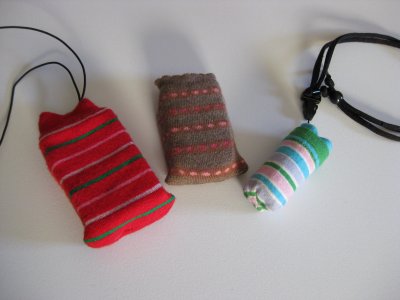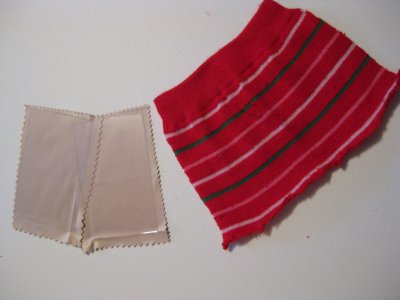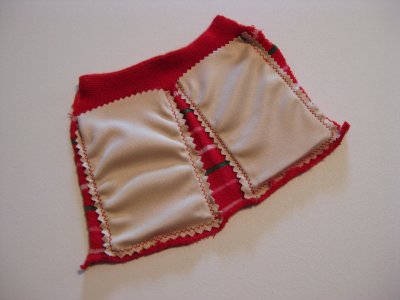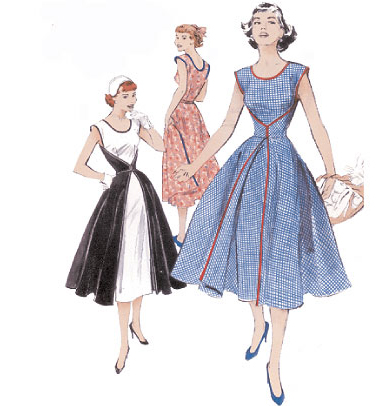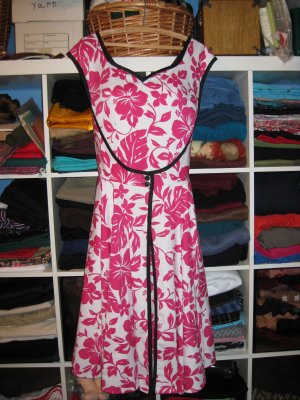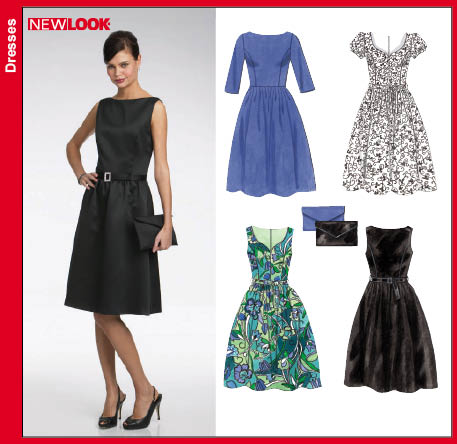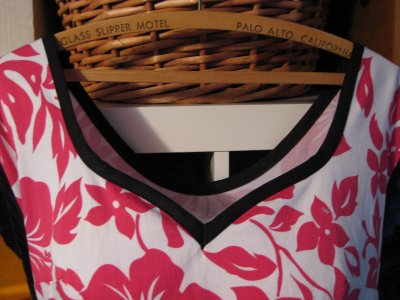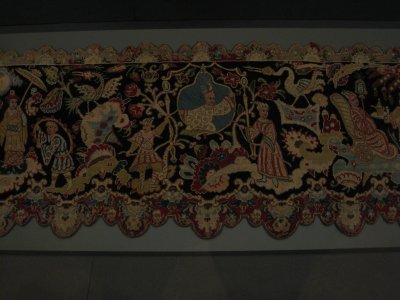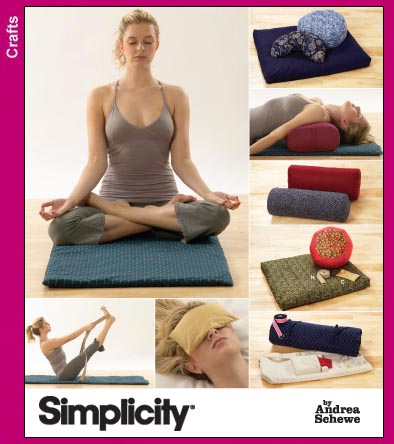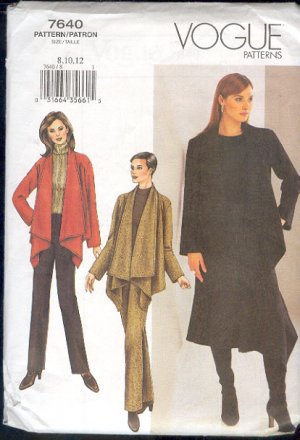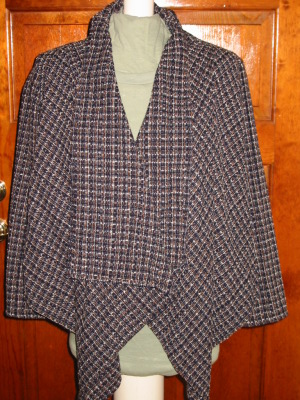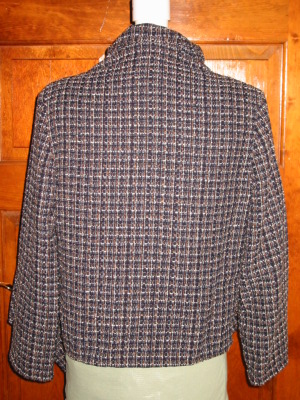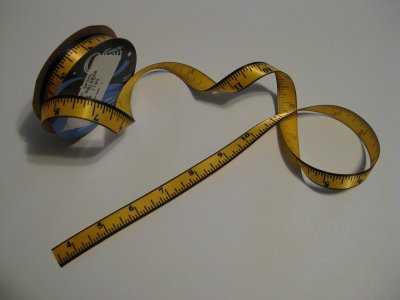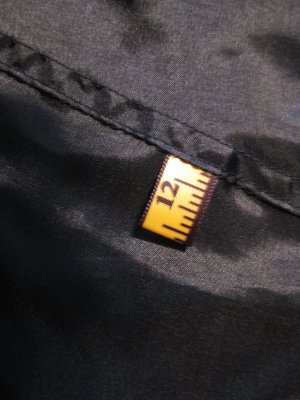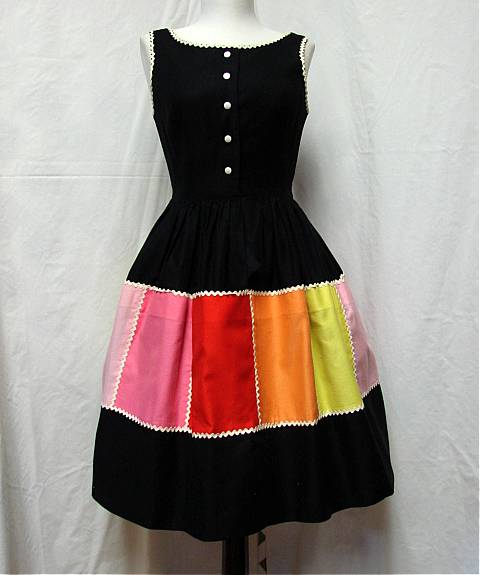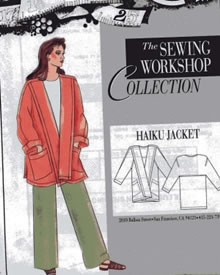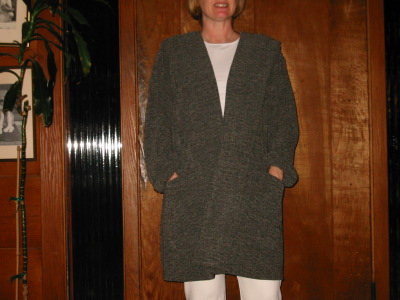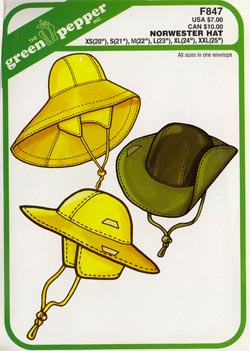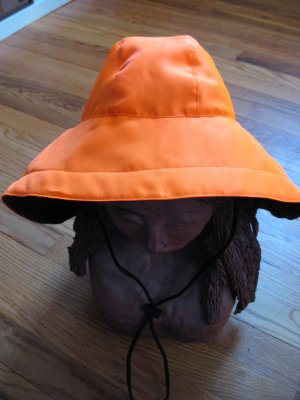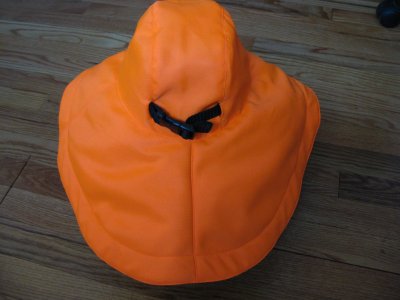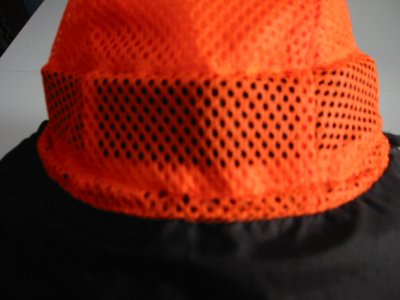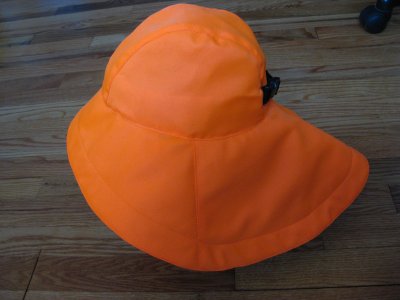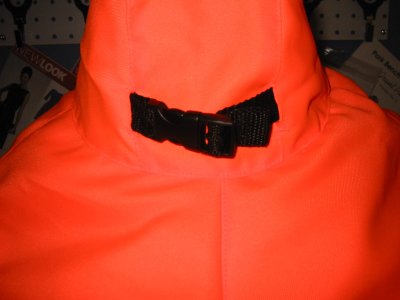
I’ve wanted to make this parka for decades. Two years ago, I found a lightweight upholstery tapestry fabric that seemed just right for it. The primary colors are a muted olive green, a dark gold, and a muted rust. I wanted a serious winter pullover, so I also bought rust microfleece for the lining.
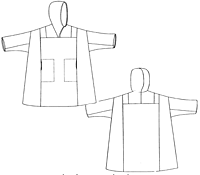
Last year, I finally put it together. The essential design is very simple; it’s really just a batch of geometric lines. For my version, I eliminated the yoke seams closest to the center line, partly because my fabric was relatively thick, and partly because of the complications of matching the pattern. I also combined the two pattern pieces for each sleeve, eliminating the lower seam, for the same reasons.
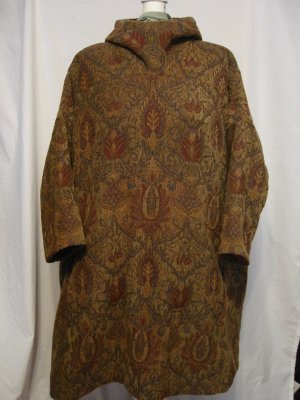
I made a size small. It was the right choice, since I added an almost-bulky lining. If I make a single-layer version in the future, I’ll make an extra-small. Other reviews I’ve read pointed out that the sizing tends toward the huge; I agree!
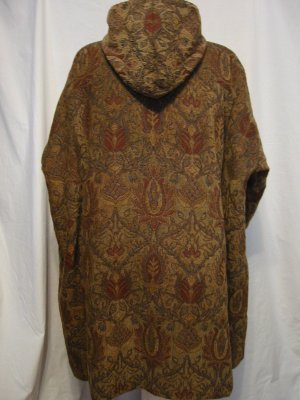
For cutting I had to lay the fabric flat. Matching the fabric motifs was time-consuming, and adding the lining contributed to making this project much bigger than necessary. There’s nothing complicated about the essential construction, though, and this coat could probably be made up in a couple of hours with a different fabric choice and no lining. Above is the back view, showing the hood, and, below, a detail view of the front where the hood is attached to the yoke.
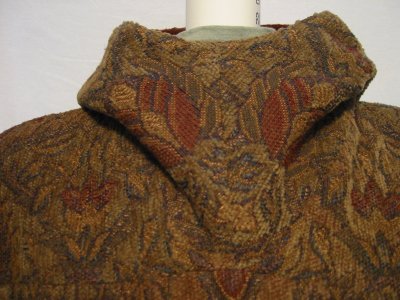
The pockets are the only real challenge; it’s critical to mark them carefully on the front before you stitch. The instructions call for only one line of stitching, which doesn’t offer much security if you plan to use them vigorously. I didn’t like the look of a double row of stitches, so I took advantage of the slight pile of my material and just sewed over my original line of stitches a second time.
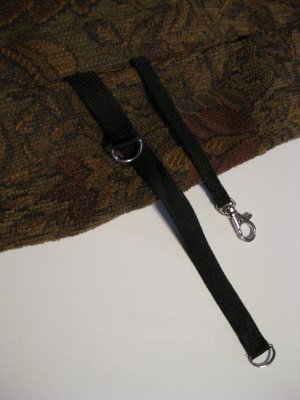
I added small hooks and D rings on thin webbing straps inside the pockets; I don’t carry a bag or purse when wearing this parka, and like to secure my belongings when using large pockets.
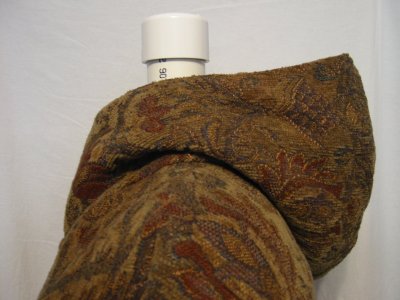
The lines of the hood were a fabulous surprise — the curve around the face is beautiful, and the neckline looks great whether the hood is up or down. (Sorry, no face shot to show that curve, but take a look at the pattern; you’ll see how nicely it works.)
Here’s the back view with the hood up:
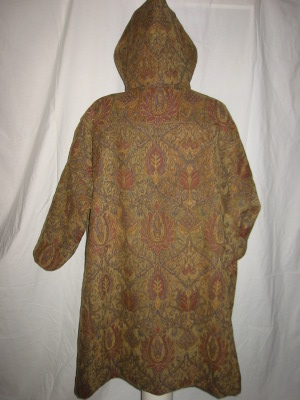
My photos make my coat look a little limp; with me inside, it’s got a lot more flair (literally) — much like the Folkwear photo below. This is one of my all-time favorite coats, and I’m really eager to make it again (and again and again!). It’s amazingly easy to wear while running around town, and there’s nothing better for riding the subway in deep
It’s not exactly easy to remove, and, made of my heavy-duty fabric and lining, it can be very warm if you’re spending more than a few minutes indoors.
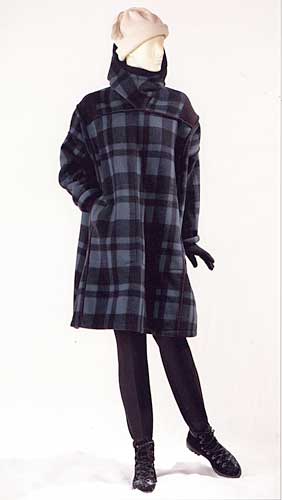
I could see this in melton wool, polarfleece, a corduroy or even a sweatshirt fleece. Folkwear shows it in this plaid; very sophisticated!
Folkwear Patterns can be difficult to find. I own several boxes of them, bought many years ago, but ordered this one from Ursula’s Alcove, and was very pleased with the pleasant help and fast shipping. It’s worth shopping around; some sites charge ridiculously high prices for Folkwear; comparing prices can save you lots.

